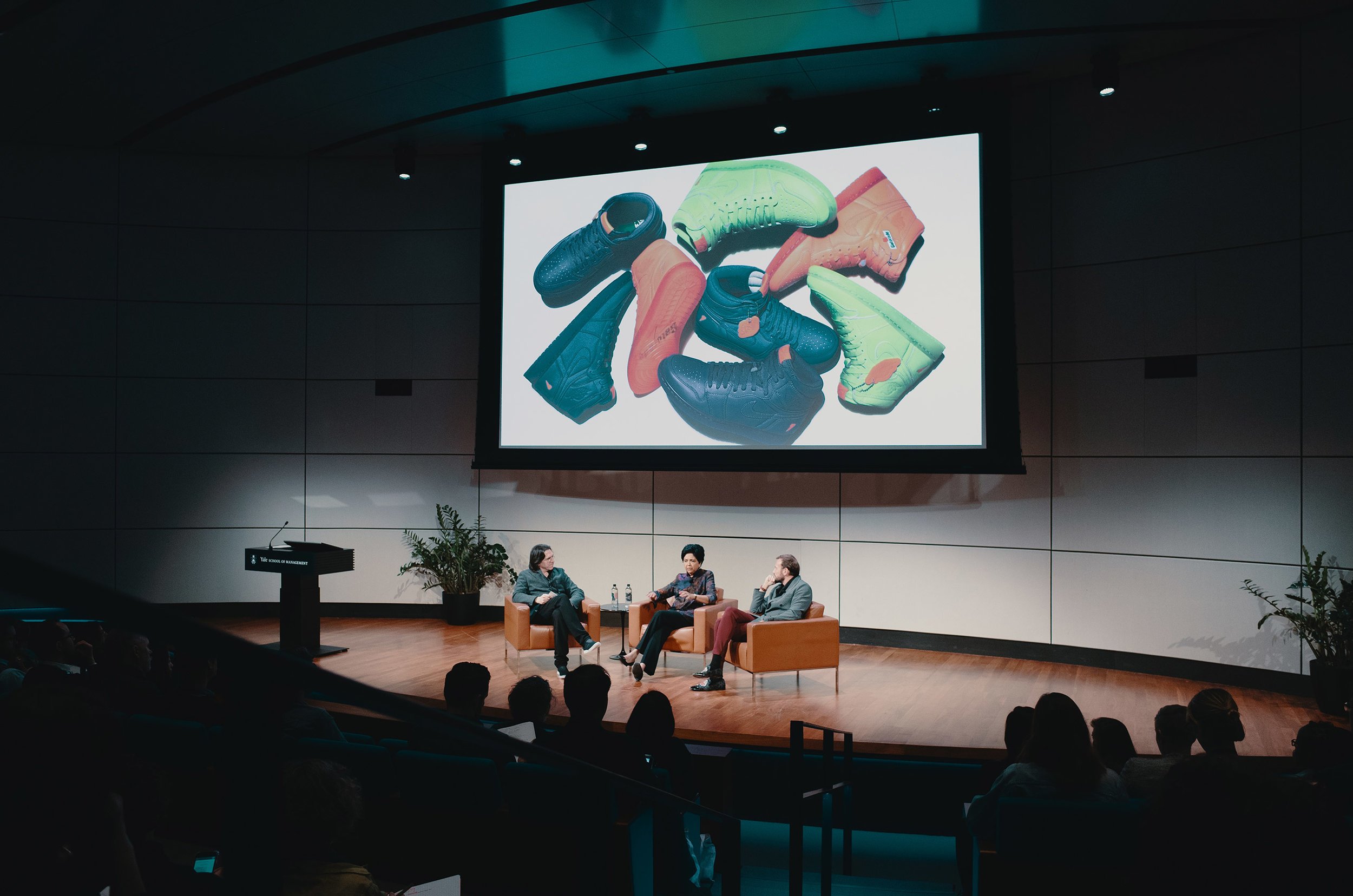Business of Design at Yale
Design-driven companies outperform the S&P 500 by 228 percent. That’s according to the Design Value Index (DVI), a market index that tracks how design-focused companies perform relative to the S&P 500 over time. It’s clear that good design and good business are inextricably linked. We went to a conference that delved into this very premise.
Over a November weekend, we traveled to the Yale School of Management in New Haven to attend the first ever “The Design of Business/The Business of Design” conference, presented by Design Observer and AIGA. By convening the design community and leaders in the corporate world, the gathering aimed to discuss best practices for supporting design-led businesses, as well as the impact that design has on business approaches and processes.
The 225,000-square-foot Edward P. Evans Hall, home of the Yale School of Management.
Two presentations came from CEOs with their respective creative directors — former Pepsico CEO Indra Nooyi with her Chief Design Officer Mauro Porcini and The New York Times Company CEO Mark Thompson with Chief Creative Officer Tom Bodkin. These strong partnerships illustrate the importance of design thinking and support for creativity at the very highest levels of an organization, and the power of institutionalizing innovation in order to adapt and grow.
One realization that became abundantly clear is that a design-friendly corporate culture must start in the C-suite.
Other speakers included Todd Waterbury, CCO for Target, Jon Iwata, Chief Brand Officer for IBM, and Valla Vakili, the head of Citibank’s Ventures Studio. The most fascinating talk, however, came from a businesswoman we had never heard of — Zita Cobb, the founder of Canadian nonprofit Shorefast. She spoke about her experience growing up on Fogo Island, a tiny, remote island off the northeast coast of Newfoundland.
Faced with the decline of the island’s inshore fishing industry and its way of life, Cobb founded Shorefast in 2006 to help rethink and reengineer the island’s economy from the inside out, using the community’s inherent assets and resources. By employing a holistic approach, Cobb was able to create a successful — and sustainable — path forward for her ancestral home. Fogo island today is thriving and locally owned, with healthy fisheries, strong economic partnerships, abundant tourism, innovative programs that protect the island’s cultural heritage and natural resources, and vibrant arts initiatives. This was a perfect example of a sometimes overused and little understood concept — design thinking — in action, and tangible proof of the power of business and design working in tandem to affect great change. ⌁
The New York Times Design Director Tom Bodkin and President/CEO Mark Thompson being interviewed by Fortune Senior Editor Ellen McGirt







